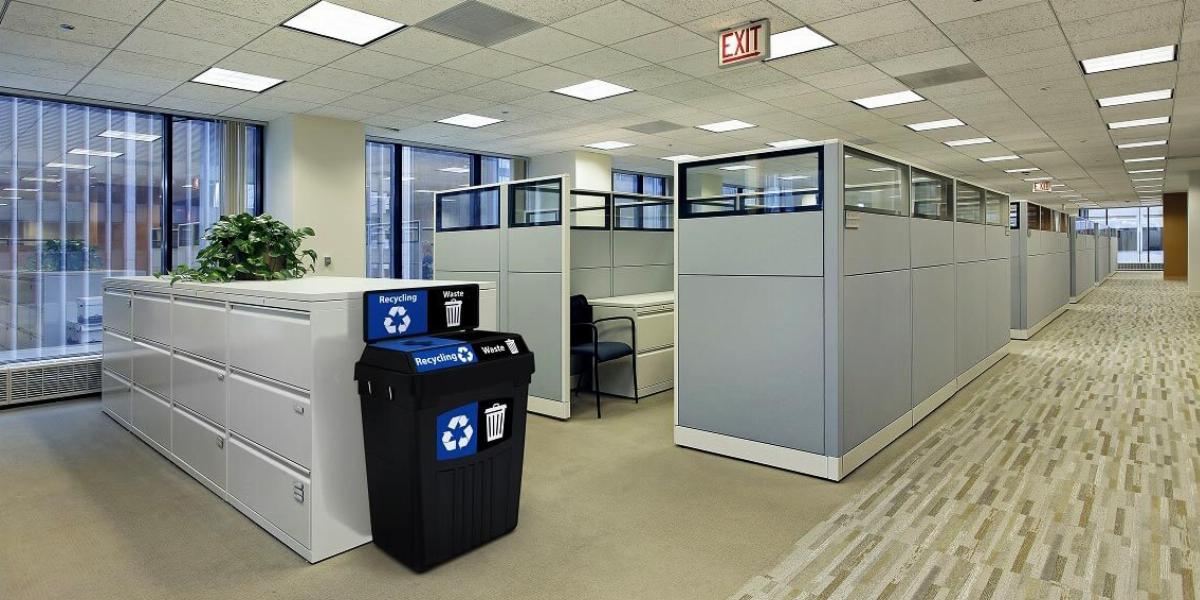
Whether you’re looking to become a more sustainable business or schedule fewer trash pickups, increasing the diversion rate at your organization can help you achieve that goal.
The first step to setting new goals is to find out how much you’re currently throwing away and recycling. Antonia Edwards from CleanRiver Recycling Solutions recommends performing a waste audit since it’s a “great tool for you to get an understanding of the type of waste your facility is generating and the type of waste that employees, guests or customers are bringing into your facility.”
Got your waste audit information in hand? We’ll show you how to calculate and increase your business’s diversion rate.
Waste diversion rate, sometimes called landfill diversion, is the percentage of waste a business keeps out of the landfill. It represents the amount of material that is recycled, composted or eliminated from your waste stream. The higher your diversion rate, the less trash you’re throwing out.
Using data from your most recent waste audit, find the total weight of your business’s recycling and garbage. Then, use the formula below to figure out your diversion rate.

According to Planet Aid, Inc. the average recycling rate in the United States is about 34 percent. But even if you are already recycling more than that, further growing your waste diversion rate benefits the environment and can help you save on your monthly trash bill.
Now that you know how much waste you keep out of landfills, you can make a plan to get better. Take a look at your waste audit to see what you throw out the most. Look for areas where you can make small changes that will still make a difference, like printing documents double-sided. Use the potential impact from these new practices to set a diversion rate goal for your next audit.
“As with all goals, keep them SMART – Specific, Measurable, Realistic and Timely. Your first waste audit will identify where you currently are and give you an indication of what your first goal should be. At CleanRiver, we conduct quarterly waste audits and identify new ways to improve our diversion rate. It also provides insight on anything that might have changed within your organization that is producing a different type of waste.”
Antonia Edwards | CleanRiver Recycling Solutions
Remember that your goals can be simple, such as reducing paper waste by 20 percent, or require more complex planning, such as finding a new shipping material supplier to cut back on packaging waste.
Edwards also reminds us that waste diversion isn’t just about increasing your recycling rate. For example, at CleanRiver, all employees use reusable lunch containers to reduce the amount of waste brought into their office in the first place. Once you challenge employees to look at how much waste they generate and spark a change in their habits, your diversion rate should get even better.
For these new office policies to work, you need to communicate them clearly to your staff. Outline your goals in a meeting and follow up with an email so everyone knows exactly what’s expected and how your workplace will benefit.
“Culture is the number one driver of a successful recycling program. Once people are on board with it and understand how they impact the program, they will be open to changing their habits.”
Antonia Edwards | CleanRiver Recycling Solutions
Mixing recyclable and non-recyclable items, not separating items correctly or placing food in recycling bins instead of a compost pile are all sources of contamination. Mixing in just a few incorrect items can cause an entire recycling bin to be sent to the landfill. Recycling contamination is a problem because your business’s recycling rate may be lower than you think if you’re frequently contaminating your bins.
Edwards recommends following these rules to limit contamination:
Once you put new diversion practices in place, don’t set it and forget it. Perform waste audits on a quarterly or yearly basis to check against your diversion goals and adjust them as needed.
Looking for more advice? Read through our expert strategies for writing your organization’s waste management plan.